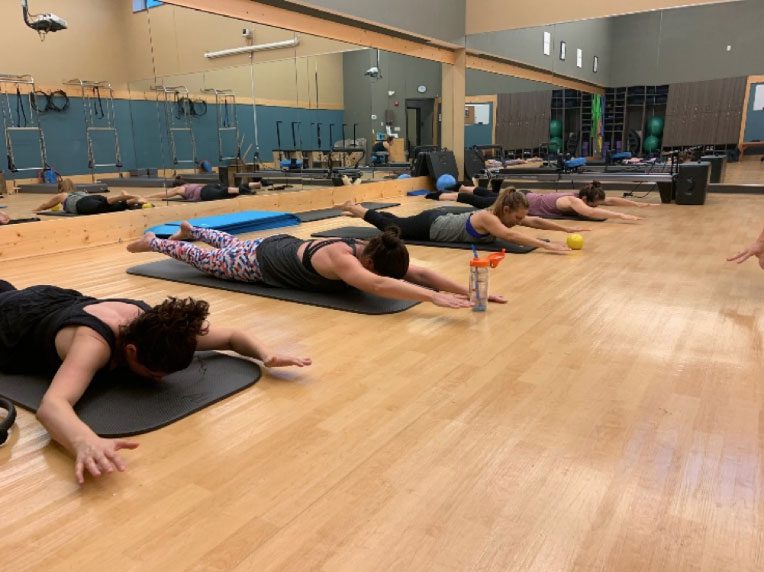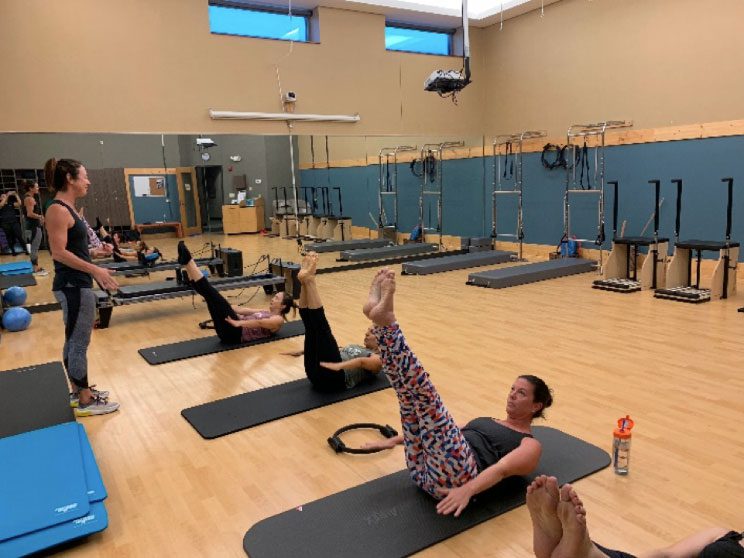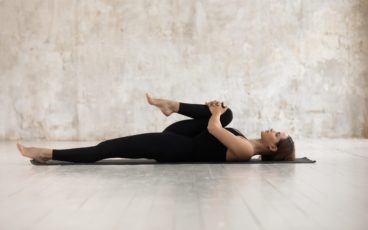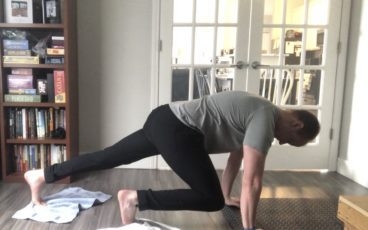Numerous research studies have found that prolonged periods of sitting can trigger low back pain. It has also been said that “sitting is the new heart attack,” and while this adage may be a bit exaggerated, the truth is that prolonged sitting with little to no activity produces muscular weakness and imbalances. This combination alone can and often does lead to low back pain.
So, what happens when we sit? With the advent and progress of technology when we are seated, we find ourselves in a kyphotic posture–a forward-leaning posture, resulting in a forward head, shoulders that are rounded forward, and short, strong, tight hip flexors and inactive core muscles.
Basically, muscles at the front of the body can be tight and overused (e.g., front of the shoulders, chest and hip flexors) and muscles in the back of the body (e.g., neck flexors, upper back muscles and glutes) are weaker and underused. Sitting in a forward-leaning posture can cause muscular discomfort from overly tight muscles and lower back pain.
So how does Pilates factor into this equation? Pilates is an exercise format that focuses on strengthening the muscles of the core while working the muscles and joints of the extremities through full range of motion. Exercises are designed to take clients through all functional ranges of motion flexion (bending forward), extension (reaching long or lifting up), rotation (turning side to side), lateral flexion (reaching up and to the side).
For clients who are challenged with low back issues, exercise emphasis is placed on balancing proper flexion with extension. Pilates exercises such as “swimming” or the “hundred” exercise (pictured at right) are two exercises that may be used to help clients achieve proper muscular balance. Depending on the state of low back pain, one or both exercises may be used to achieve muscular balance (Note that some clients do well with flexion exercises, while others do well with extension exercises).
Additionally, we use various small apparatuses, like the Pilates ring or Posi ball to help clients properly activate muscles that assist in strengthening and balancing muscles that support the back. Pilates provides strength and balance not only to the muscles that support the back, but all muscles, to create a balanced, strong, optimally functioning body.
Looking to relieve lower back pain, improve overall function, and increase strength? Try Pilates. Contact Yvonne Taylor at ytbennett@ibji.com at the IBJI Health Performance Institute in Highland Park, Illinois, to get started on your journey of fully-functional health, fitness and wellness…Pilates style!
Yvonne Taylor, MS, NASM, STOTT, is a Pilates instructor at the IBJI Health Performance Institute in Highland Park, Illinois.

Yvonne Taylor, MS, NASM, STOTT
Pilates Instructor, IBJI Health Performance Institute

Hundred position

Swimming position




